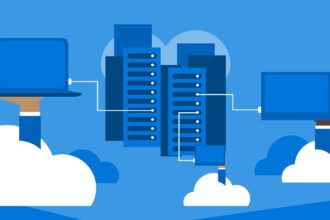There is no denying the fact that big data has become a critical asset to countless organizations all over the world. Many companies are storing data internally, which means that they have to be responsible for maintaining their own standards.
Unfortunately, managing your own data server can be overwhelming. You have to make sure that your data is going to be secure from breaches and preserved from potential data outages.
You can keep reading to learn more about how to manage a data server. This is going to be vital for your data management strategy.
Server Management Practices that All Data-Driven Companies Have to Follow
In today’s interconnected world, server management is an essential task for systems administrators, especially in companies that are very dependent on big data. As business data becomes more and more critical to the company operations, it needs backups on servers that are quickly and globally accessible.
The best server management practices will give you peace of mind knowing your systems are compliant and that your data will be secure while identifying problems before they turn into downtime. Moreover, you want the ability to work remotely without having local IT support available.
Understandably, data server management can be an arduous task, as it requires a hands-on approach from your end. If your server management overhead is biting off more than it can chew, you should consider serverless computing from a Platform-as-a-Service such as Akka Serverless.
The term “serverless computing” describes a model in which applications are run on cloud platforms and data can be accessed via connected devices or web browsers. Essentially, a serverless vendor handles the backend server management, freeing your team to focus on development and deployment.
To improve data scalability, service providers allow customers to pay only for what they use (“pay as you go”) rather than making an upfront commitment based upon expected usage patterns. In addition, developers can deploy their apps without worrying about underlying infrastructure or capacity planning. As you can imagine, this method also reduces deployment time.
That said, if DIY server management still feels like the solution for your business, here’s a comprehensive look at server management best practices to help your server set-up succeed.
What are some of the best practices when it comes to managing your data server?
Server management is vital for any company looking to reduce costly downtime. Whether it’s a small startup or a Fortune 500, these practices can be the difference between success and failure in today’s data-centric world.
Working with antivirus software
Antivirus programs are an essential part of any server’s anti-malware solution. However, individual users often have multiple security solutions running simultaneously, leading to conflicts and errors. For these services to work as intended, they need the appropriate management to avoid interfering with one another or causing damage. Redundancy in security can be wise, but it requires a more attentive eye than a single-software solution.
Monitor your drivers
Drivers are essential because they provide vital links between computer components, software programs, and the operating system. They are vital to any organization that relies on big data.
Since these tiny files control how an entire system operates, they must be regularly updated to avoid any problems or conflicts on a server. Furthermore, outdated drivers can cause compatibility issues with new hardware devices, which the team must consider when planning upgrades.
Documentation
Many people do not think about writing policies on data management until after problems arise. Nonetheless, establishing policy is one of the most beneficial things that administrators can do. Keeping detailed records of previous issues and their solutions can save time and headaches in the future.
Patch management
Servers are always at risk of attacks by malware or viruses. To help prevent that from happening, administrators must create an effective plan for regularly applying security updates to systems on their networks.
If not enough time is allowed between updates or different systems have different schedules for updating, you might inadvertently create gaps in your security measures. Use a clearly communicated update policy to avoid creating new vulnerabilities between patches.
Inventory control
While some hardware devices can be installed during a server’s initial set-up process, other equipment, such as new monitors or printers, often requires later implementation.
Keeping a thorough inventory of what hardware is connected to a server and when it was attached will help an administrator find possible sources for problems should they suddenly appear.
Performing regular backups
No matter how careful administrators are, there will always be disasters that could damage or even destroy data. Having up-to-date backup files saved away to restore lost information maintains a server’s integrity and keeps operations running smoothly even after a disaster occurs.
Managing hardware
When a server shows signs of slowing down, it’s time for the administrator to start thinking about upgrading some components. However, it’s important not to go overboard, as there should be enough room for existing programs and services to continue operating even as the team incorporates additional components.
If an administrator doesn’t know how much space a server needs, they can always conduct tests beforehand to determine what upgrades are needed and whether or not the server might require additional hardware.
Final thoughts
In today’s world, servers are the backbone of your business. If you don’t have a reliable server management strategy, you will suffer from data loss and downtime that could cost thousands in revenue per hour. As such, you must employ the practices above to prevent that from happening.








